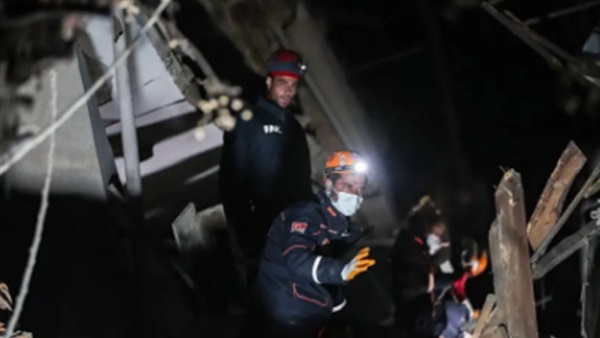Deadly Quake Strikes Turkey Again, Adding to Trauma of Devastated Region

On Monday, another powerful earthquake struck the southern
Turkish province of Hatay, just two weeks after the deadliest earthquake in the
country’s modern history. The recent 6.4 magnitude quake hit one of the areas
hardest hit by the previous 7.8 magnitude earthquake and its aftershocks, which
claimed at least 46,000 lives in Turkey and Syria, and left many more homeless.
At least three people were killed and 213 injured, according to Turkey’s
interior minister, Suleyman Soylu, but local officials say more are trapped in
the rubble, their conditions unknown. In the opposition-held area of
northwestern Syria, at least 150 people were injured, but there were no
confirmed deaths.
Since the earlier quake, many people across the region whose
homes were still standing had been sleeping in tents, shipping containers, and
other makeshift shelters in frigid winter conditions, for fear that their
structures were unsafe - a fact that may have saved lives on Monday as more
buildings tumbled. Turkish emergency workers had been winding down rescue
operations as hopes faded of finding more survivors in the ruins of the earlier
quake, only to be called on Monday to resume saving lives.
The disaster came hours after Antony J. Blinken, making his
first visit to Turkey as U.S. secretary of state, had declared, “The United
States is here to support you in your time of need, and we will be by your side
for as long as it takes to recover and rebuild.” After the Feb. 6 earthquake,
the United States sent search-and-rescue teams, heavy equipment, $85 million in
humanitarian aid, and $80 million in private donations, and Mr. Blinken
announced an additional $100 million in aid.
The epicenter of Monday’s shock was just 10 miles southwest
of the ancient city of Antakya, formerly known as Antioch, and even closer to
Samandag, both already ravaged by the earlier quake. The epicenter was
relatively shallow, just 10 miles underground, which makes for more intense
shaking at the surface. Local officials said it felt just as powerful, if not more
so, than the bigger Feb. 6 quake centered more than 80 miles from Antakya.
Since the February 6th earthquake, the issue of poorly
constructed buildings has emerged as a major problem, as many victims of the
quake had lived in modern high-rise apartment buildings they believed were
earthquake-safe, yet they still collapsed. This has fueled widespread anger at
officials and contractors who ignored seismic building codes. This has prompted
the arrest of some builders, and opposition politicians have cast blame on
President Recep Tayyip Erdogan, who already faced an uphill battle for
re-election.
As a result, Turkish authorities warned people to stay away
from damaged structures that could yet collapse. Refik Eryilmaz, the mayor of
Samandag, told the broadcaster Halk TV, “the shelter problem is real,” and
parents trying to survive with children out in the cold are tempted to return
to unsafe buildings. "One can’t put a police officer in front of every
building," he said, adding, "this could only be solved with more
tents." Meanwhile, people fled their homes, toting young children, pets, a
few clothes, and blankets, to take shelter in gymnasiums, just as they did two
weeks ago.





